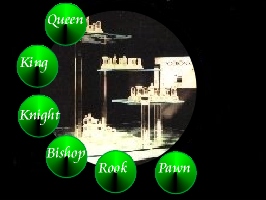Podionic Chess, is a three dimensional chess variant based on an aggressive strategy of modern day Chess.
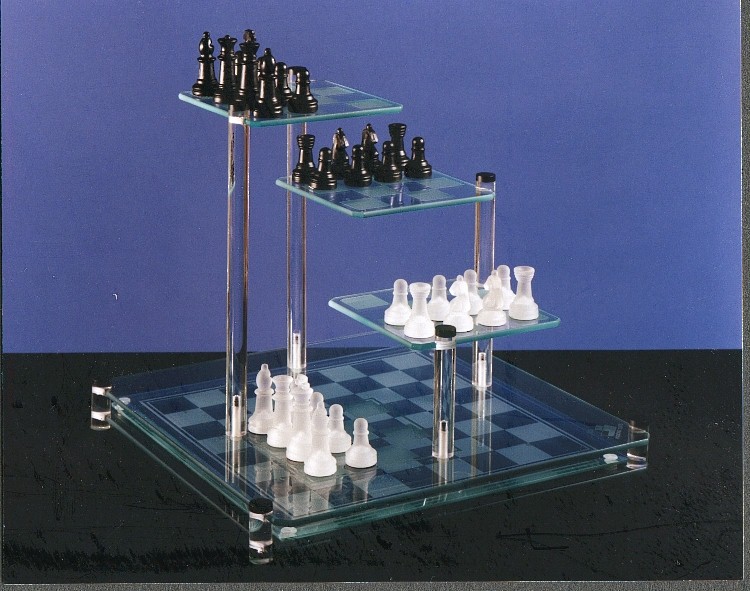
Podionic Chess was created as the flag ship product for a small wholesalers to the gift market.
Designed by Jonathan Pannell with Maurizio Malpeli. Since it’s creation in 1995 there were only 102 sets made during 1995 and 1996, the first two were proto types and still owned by Jonathan Pannell, all the others were serial numbered except one.
Podionic Chess was mainly sold in the UK to retail outlets such as Harrods, John Lewis, Selfridges and Whitley’s. Two were purchased by Elizabeth Guinness herself for the Guinness Gallery.
The name Podionic was invented by Lee Sanky and Darren Caulson along with the Logo & appearance of the box.
Digital Podionic Chess
Code Java Script progress – Board layout ver 1.3 https://g.co/gemini/share/e8b89fe7a226
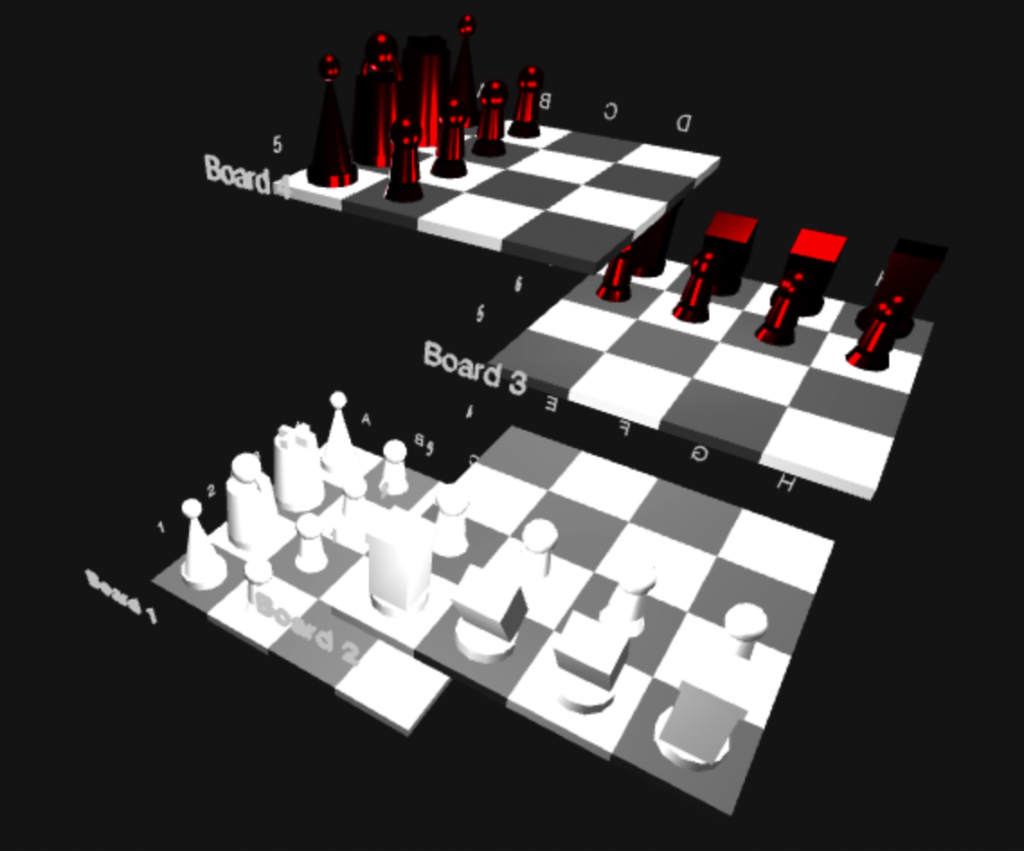
The Rules
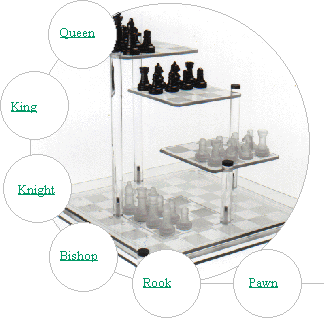
Following the diagram below, White moves first with the pieces set-up as shown. Podionic consists of four sixteen squared playing boards, positioned above each other in an over-lapping spiral rotation
The Start Positions
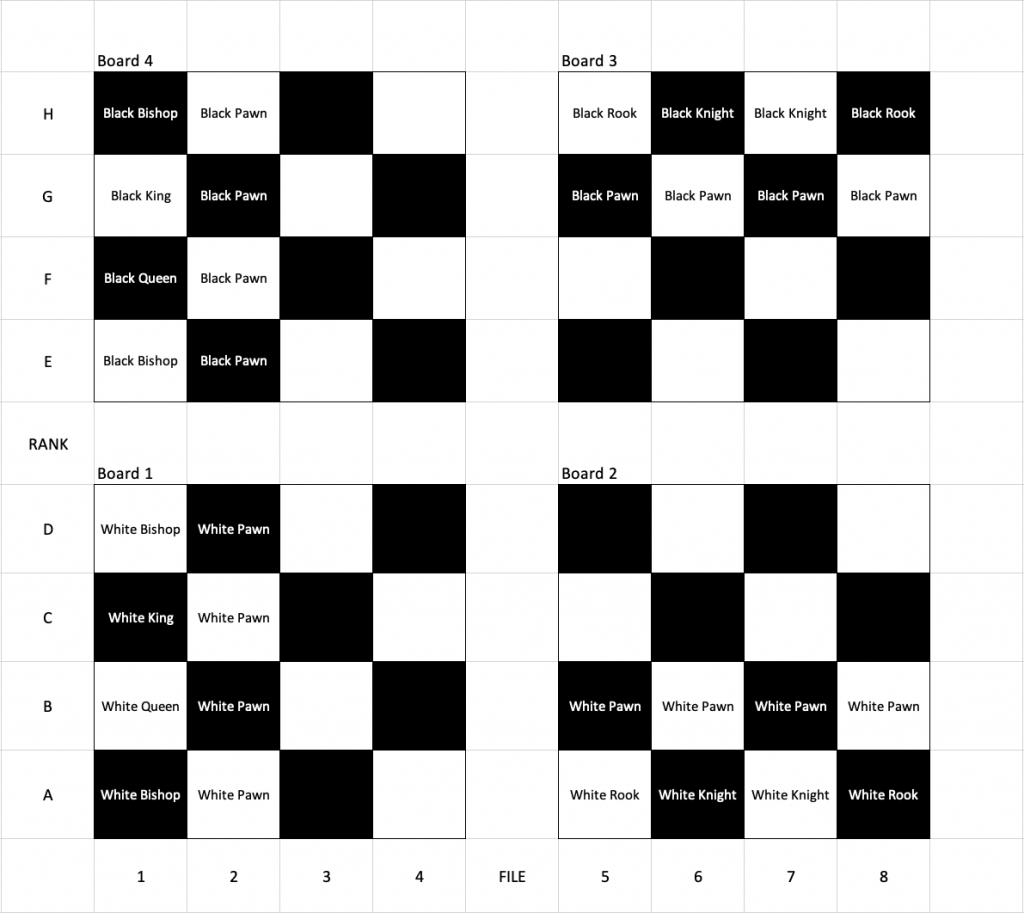
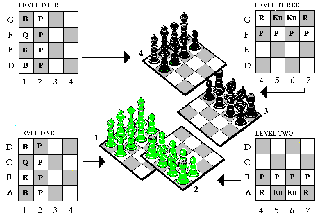
Over lapping Squares
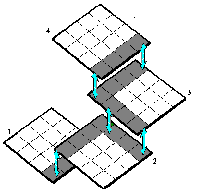
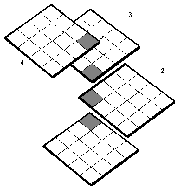
The King
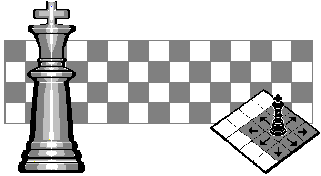
The King : The King can move one square at a time to any adjoining square that is not attached by an opponent’s piece. The King captures in the same manner any unprotected opposing Chess piece
The King is in check when he is attacked by an opponent’s piece or pawn. The player making check must say ‘check’ when attacking the opponent’s King.
Once the King is in check, he must do one of the following three things to continue the game
1. The King must move out of check.
2. The hostile piece that checks the King must be captured.
3. A piece or pawn must be placed between the King and the attacking piece
“Checkmate” means the King cannot move out of check. The King in checkmate loses the game.
Castling is not available due to the King and the Rook starting on different levels
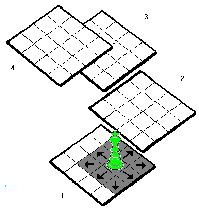
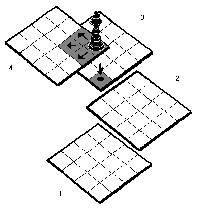
The Queen
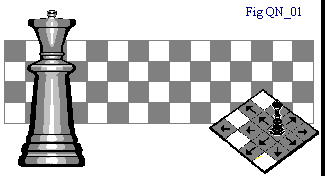
The Queen : The Queen moves and captures on the rank, the file and diagonal in any direction over unoccupied squares.
Once the Queen reaches an overlapping square, it can chose to move or capture up or down onto the adjoining level within the same one move.
As shown in Fig QN_02
Once the Queen is on an overlapping square it can move to any adjoining level and move any square on the rank, the file or the diagonal.
As shown in Fig QN_03
In defence the Queen is vulnerable due to her worth, trading two players for her will pay off in the end game
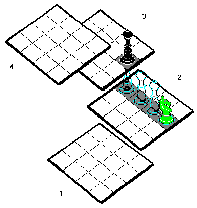
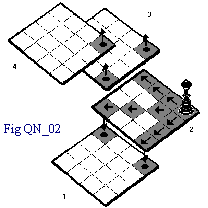
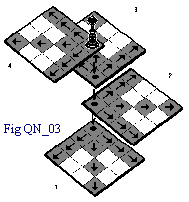
The Queen’s range in Podionic is far greater than in the traditional game. From the Central column she can capture 39 of the 64 squares. ( not including the one she’s on )
The Bishop
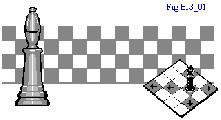
The Bishop : The Bishop moves or captures diagonally in any direction over unoccupied squares
Once the Bishop reaches an overlapping square, it can chose to move or capture up or down onto the adjoining level within the same move.
As shown in Fig BIS_02
Once the Bishop is in an overlapping square it can move to any adjoining level and move to any square on the diagonal, within the same one move. As shown in Fig BIS_03
The Bishop not on the diagonal to the central column is slow to use in attack as it can only move through levels one move at a time
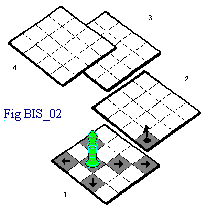
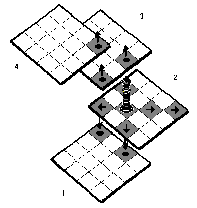
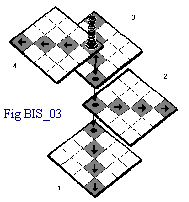
The two bishops are very different in behaviour. The one on the diagonal to the central column can be used effectively in attack or defence.
The Knight
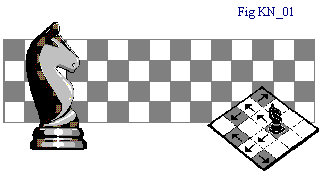
The Knight : The Knight’s move is composed of two different steps : two squares forward and one square to either side, or two squares sideways and one square forward or backwards. As shown in Fig KN_01
The Knight can also move to another level by jumping two squares forward and one square up or down an overlapping square.
As shown in Fig KN_03
The Knight jumps over any pieces in it’s path and captures an opponent on the last square of it’s move. To move through the levels, the Knight moves two squares downward and one square across, as indicated by the shaded areas in
Fig KN_02
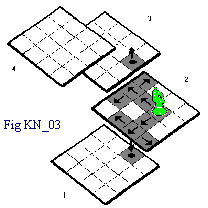
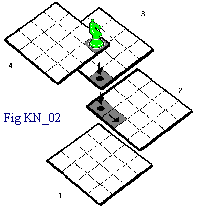
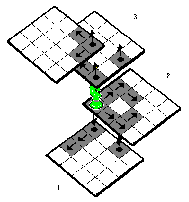
Defensively the Knight is vulnerable without backup, advance him to deep and his easily trapped The Knight is a very effective attacking piece, which is often the only player which can attack on a level without the need to defend
The Rook
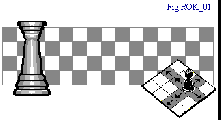
The Rook : The Rook moves and captures on the file or rank only, over unoccupied squares.
Once the Rook reaches an overlapping square, it can chose to move or capture up or down onto the adjoining level within the same one move.
As shown in Fig ROK_02
Once the Rook is on an overlapping square it can move to any adjoining level and move to any square on the rank or file, within one move.
As shown in Fig ROK_03
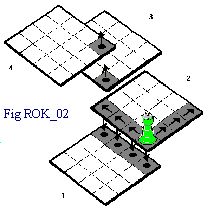
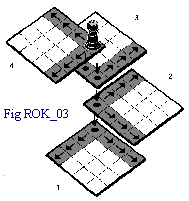
Use the Rook in defence of the middle boards at the beginning of the game. Be careful not to lose one, as they are strongest in pairs for the end game The Rook is strongest defensive player on the board next to the Queen
The Pawn
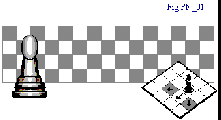
The Pawn : The Pawn moves forward only, and excepting for it’s first move, only one square at a time.
The Pawn can capture on the forward facing diagonal squares. As shown in Fig PN_01
The Pawn moves or captures to the next level directly upwards ( for White ) or downwards ( for Black ) once positioned on an overlapping square. Each Pawn for it’s first move has the option of moving one or two squares forward.
See Fig PN_02 , PN_03 & PN_04 for examples
The Pawn moving to a new level will always travel forward until it reaches a “Cross over square”. Once on a “Cross over square” the Pawn must change direction to move towards the opponents next level. The “Cross over squares” are situated on levels 2 and 3 as indicated by the shaded areas in Fig PN_05
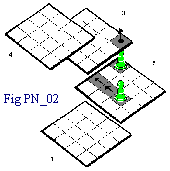
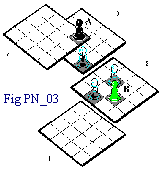
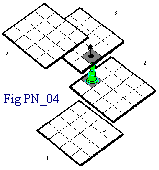
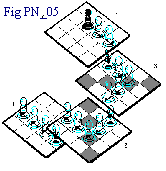
If the Pawn reaches the oppositions King line, as shown by the Pawn on level 1 in Fig PN_05, it receives an immediate promotion and can be exchanged for a Queen, Bishop, Knight or Rook, without regard for any other pieces remaining
The Pawn is best as a defensive player although if they are not used to attack, they will clog up the advancement of your own players.

